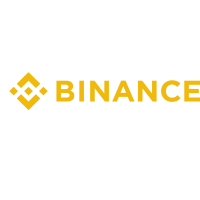
Binance
View Brand PublisherBinance: Importance of Scalability in Crypto Exchanges
The surge in trading activity following the US Crypto Strategic Reserve announcement highlighted the importance of scalability, as Binance managed smoothly while others struggled.
Earlier this month, President Donald Trump’s decision to create a US Crypto Strategic Reserve triggered a rise in crypto trading activity, with investors reacting swiftly to the announcement. This move marked a pivotal shift in the government’s stance on digital assets, incorporating major cryptocurrencies, Bitcoin, Ethereum, XRP, and Cardano, into the nation’s financial infrastructure.
The announcement led to a sharp increase in transaction requests across crypto exchanges, testing their scalability. While some platforms managed the surge effectively, others struggled to keep up. The world’s largest cryptocurrency exchange, Binance, set a record last year by processing 4.4 million requests per second (RPS), showcasing its capacity to handle extreme market conditions. In contrast, many other exchanges experienced delays, system slowdowns, and occasional outages, highlighting the critical importance of scalability during periods of intense trading activity.
Why scalability matters for crypto exchanges
Scalability is the ability of a system to handle increased workloads without compromising performance or reliability. For cryptocurrency exchanges, this means managing high volumes of trades efficiently, even during market surges. Since crypto markets move rapidly, the ability to process orders quickly and accurately is essential. Without sufficient scalability, exchanges risk frustrating users, causing missed opportunities, and losing credibility.
Key dimensions of scalability include:
- Transaction throughput: The number of transactions a platform can process per second, reflecting its capacity to handle trading activity.
- Latency: The time taken to confirm and execute trades, impacting order speed.
- Resource optimization: Efficient use of computational resources to prevent system overload.
- Traffic management: The platform’s ability to manage sudden spikes in activity without delays or increased transaction fees.
When these factors align, exchanges can maintain smooth operations, even during periods of high demand.
How Binance maintains its edge
Binance’s ability to manage high trading activity is rooted in its robust infrastructure, built to process large transaction volumes while maintaining speed and security. Its high transaction throughput enables the platform to process millions of requests per second, ensuring smooth operations during market surges.
A critical component of Binance’s scalability is its advanced matching engine, which efficiently processes buy-and-sell orders simultaneously, reducing latency and ensuring seamless order execution. The BNB Chain ecosystem also has BNB Smart Chain (BSC), a secure EVM-compatible DeFi hub that serves as the Layer 1 of BNB Chain. BSC supports smart contracts and decentralized applications, enhancing throughput and lowering transaction fees. As of 2025, BSC can process 100 million transactions per day.
To stay ahead of increasing demand, Binance consistently upgrades its infrastructure to ensure resilience, security, and the capacity to manage growing transaction volumes. The platform also operates a global network of servers and data centers, distributing traffic across multiple locations to reduce latency and prevent system overload, ensuring continuity during high-traffic events.
Why other crypto exchanges struggled
Binance managed to scale effectively during the surge, while many other exchanges faced significant challenges. System overloads occurred as platforms with limited transaction capacity struggled to process high trading volumes, leaving users unable to execute trades in real-time. Order processing delays resulted from inefficient matching engines, causing increased latency and missed trading opportunities.
Exchanges without redundancy and global infrastructure were especially vulnerable to system failures during peak demand. Platforms that could not distribute traffic loads across multiple data centers experienced outages and inconsistent performance, highlighting the consequences of inadequate scalability.
The cost of poor scalability
For cryptocurrency exchanges, scalability is a necessity, not an option. Platforms that fail to scale effectively risk not only operational disruptions but also a loss of trust and credibility among their users. In a competitive market where traders expect real-time performance, any disruption can drive users to more reliable alternatives.
Poor scalability impacts not just user satisfaction but impairs an exchange’s ability to retain active traders and capture future market share. Missed opportunities and delayed executions can lead to financial losses, further eroding user confidence and damaging the platform’s reputation.
Scalability as a competitive advantage
As the cryptocurrency market continues to grow, scalability is emerging as a key differentiator among exchanges. Platforms that invest in scalable architectures are better positioned to handle future surges in trading activity while maintaining a seamless user experience.
With crypto adoption rising exponentially, bringing hundreds of millions of new users into the ecosystem each year, the demand for reliable, high-performance exchanges has never been greater. The recent surge in trading activity serves as a reminder that scalability is not just about handling peak traffic but about maintaining trust and credibility in an environment where milliseconds can make a difference. Exchanges that prioritize scalability will be better equipped to meet the evolving demands of the crypto market and retain user confidence over the long term.
In a space where performance and reliability are essential, robust infrastructure will be key to shaping the future of digital finance.







